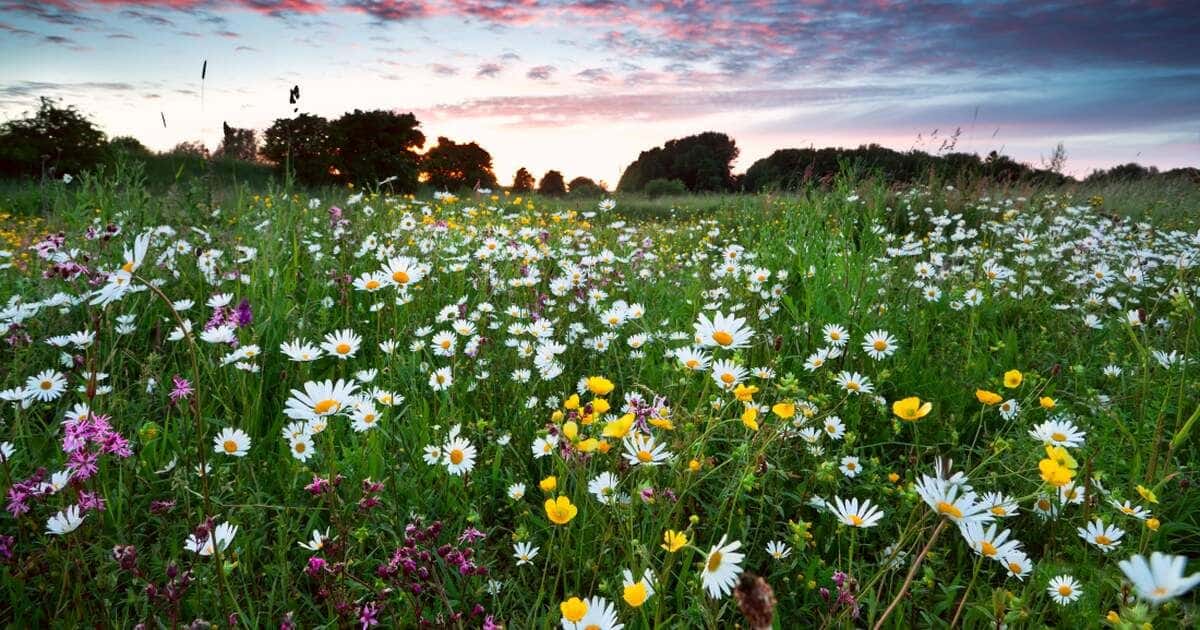Captivating wildflowers bring vibrant color and abundant pollinators to any yard or garden. You don’t need an expansive meadow to enjoy their lively presence at home. With the right wildflower seed mix, proper growing conditions and a few fundamental planting techniques, anyone can transform even a modest plot into a haven for delicate blooms that feed bees, butterflies and hummingbirds.
Preparing an ideal wildflower patch on your property requires some planning and effort upfront but yields seasonal floral displays for years with minimal care needed long-term. The rewards of seeing dazzling flowers emerge that sustain struggling pollinator populations makes growing wildflowers from seed extremely worthwhile. Follow some key site selection and planting guidelines detailed here to successfully establish hardy wildflowers tailored to your unique landscape.
What Are Wildflowers?
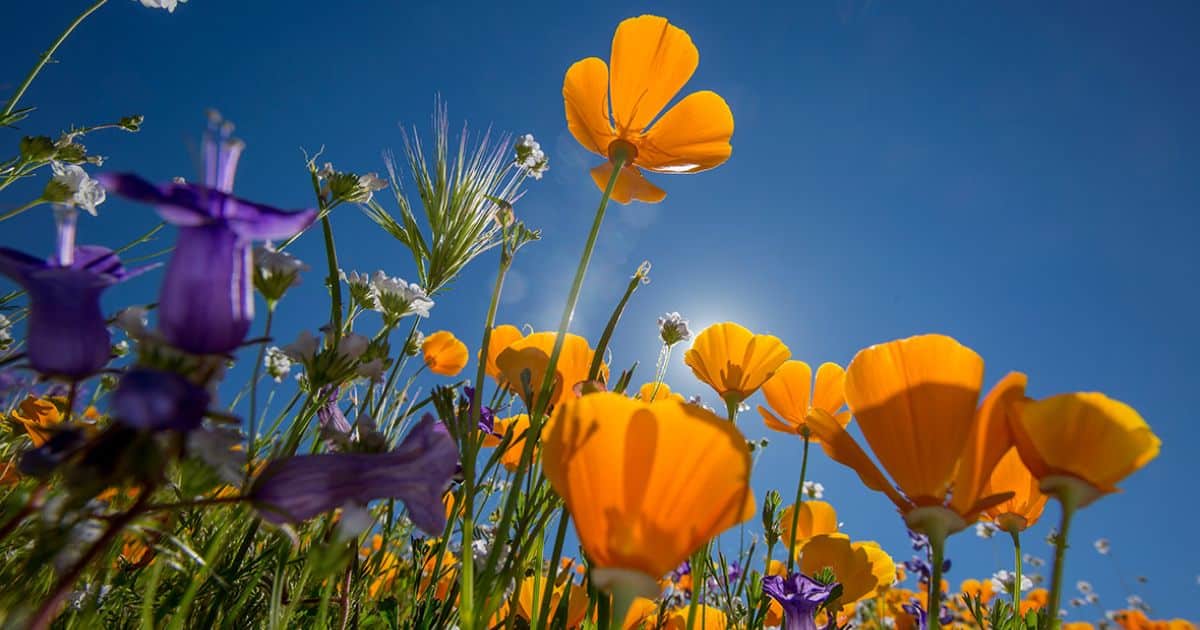
Wildflowers are flowering plants that evolved without human cultivation to grow naturally in meadows, prairies, woodlands and other habitats. Wildflowers can be annuals, biennials or perennials depending on their lifecycle. They bloom vibrantly for weeks in spring and summer before setting seed.
Many wildflower species are native to certain regions. Native wildflowers are well-adapted to local growing conditions. They form the foundation of habitat ecosystems by providing nectar and pollen that feeds bees, butterflies and hummingbirds. Non-native wildflowers can also supply food for pollinators.
Wildflowers require little care once established. They reward gardeners with long flowering seasons that attract songbirds, beneficial insects and other desirable wildlife.
Choosing Wildflower Mixes
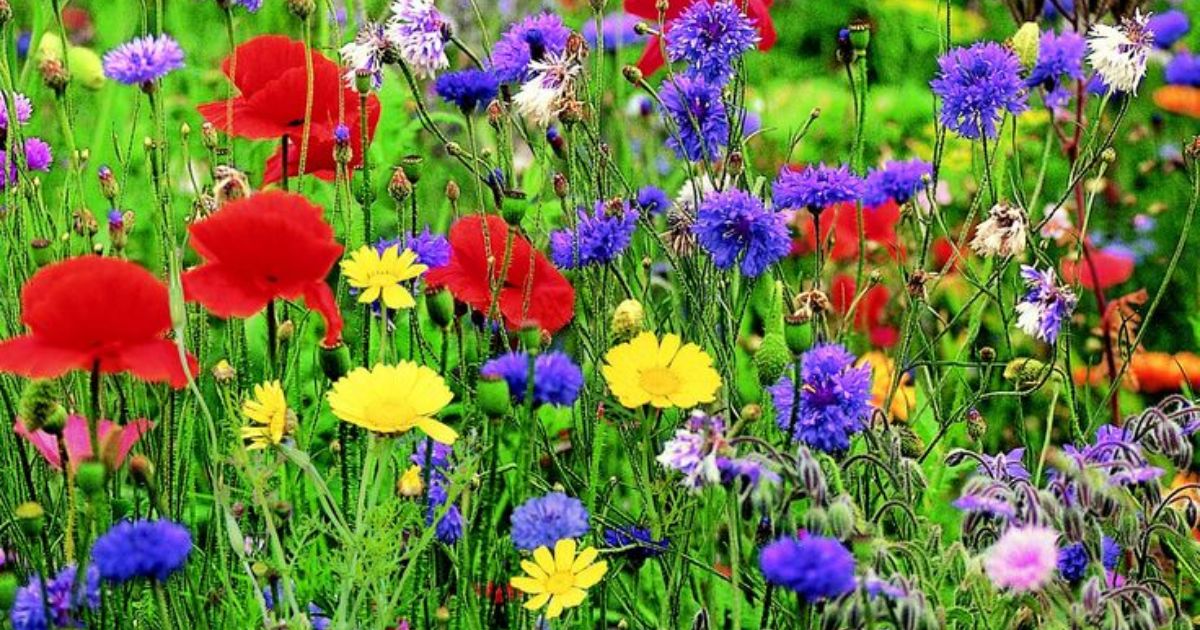
When buying wildflower seeds, you can select region-specific native mixes or non-native varieties tailored to your planting zone. Custom blends for shade, meadows and other sites are also available.
Native wildflower mixes contain species indigenous to certain states or ecosystems. These localized wildflowers co-evolved with regional fauna to form essential habitat connections. Using local genotypes helps restore biodiversity.
Annual and perennial mixes contain non-native wildflowers suitable for widespread areas. Annuals grow quickly from seed in one season while perennials return year after year. These adaptable wildflowers deliver color the first year when native perennials are just getting established.
Pollinator-friendly mixes feature daisy-shaped flowers with accessible nectar to feed bees, butterflies and hummingbirds. Examples include asters, coneflowers, cosmos and blanket flowers.
Site-specific mixes include wildflowers tailored for dry areas, partial shade, poor soil and meadow settings. Read seed packet details to match plant requirements with your existing growing conditions.
When to Plant Wildflower Seeds
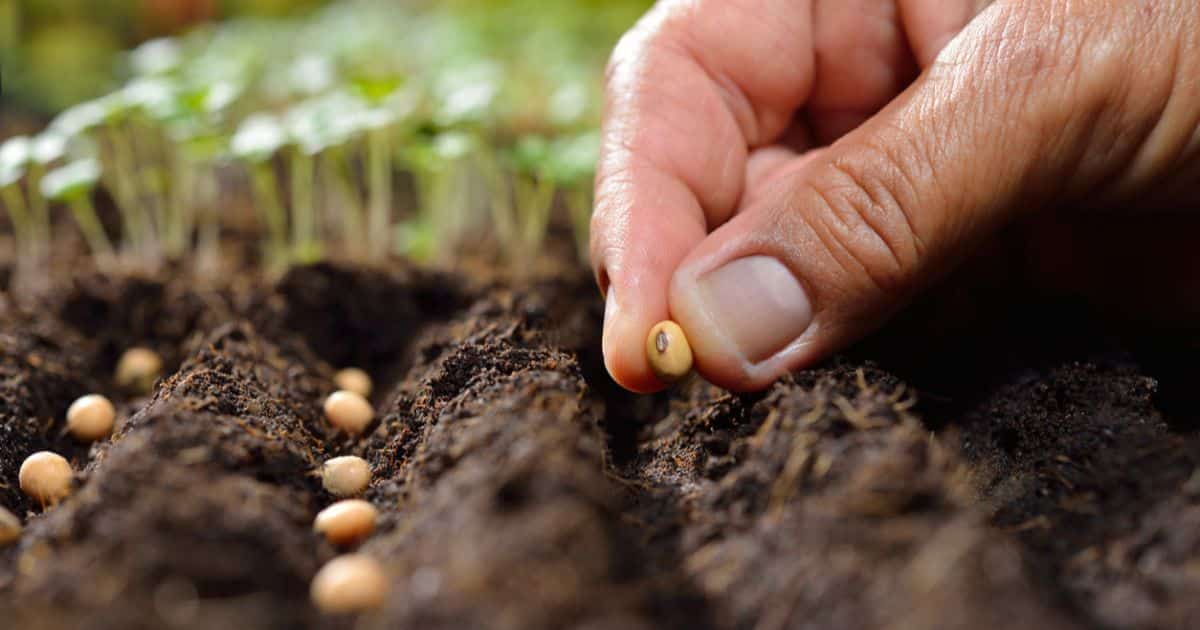
Spring or fall planting allows wildflower seeds to experience cool temperatures that often aid germination. Time sowing about 4-6 weeks before the last expected frost date in spring once soils thaw. Or plant in fall 6-10 weeks before the first frost.
- Winter sowing works for many cold-hardy wildflower species. Scatter seed late fall through early winter. The cycle of freezing and thawing helps break seed dormancy so they sprout readily come spring.
- Summer planting can work for select drought-tolerant wildflowers but requires diligent watering until plants establish. Wait until after the last spring frost then sow seed to avoid cold damage.
- Pay attention to recommended planting times on seed packets. Vine, shrub and warm-season wildflower species often favor direct sowing outdoors in late spring once warmer weather arrives.
What are the Different Types of Wildflower Seeds?
There are three main categories of wildflowers based on their lifespan. Read seed packets carefully to know what growth habit to expect.
Annual Wildflower Seeds
Complete their entire lifecycle in one growing season. Annuals efficiently produce lush foliage and abundant blooms within weeks after sprouting in spring or summer. Popular annual wildflowers include cosmos, California poppies and bachelor buttons.
Biennial Wildflower Seeds
Biennials form foliage the first season then flower the second year. Foxglove, sweet William and honesty plants feature biennial growth. After flowering, biennials finish their lifecycle and die. Some may reseed under ideal conditions.
Perennial Wildflower Seeds
Perennials persist for many years once established. ornamental grasses, Black-eyed Susans, Shasta daisies and coneflowers rank among perennial wildflower favorites. Their extensive root systems help perennials overwinter and regrow vigorously each spring.
Preparing Your Garden To Plant Wildflower Seeds
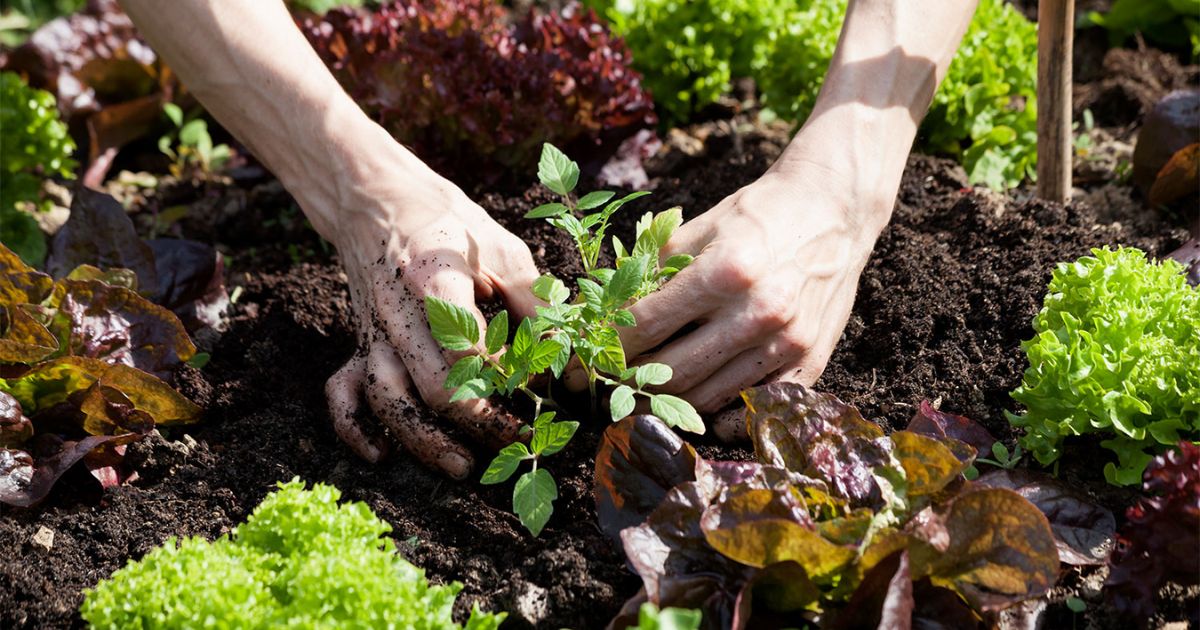
Proper planting site preparation helps wildflowers thrive with less maintenance. Follow these tips when planning space for wildflowers.
Pick a Sunny Location
Most wildflowers require full sun meaning at least 6 hours of direct sunlight daily. Observation shows the number of hours an area receives unfiltered sun exposure from sunrise to sunset. Select a bright south- or west-facing locale.
Clear the Ground
Eliminate competing weeds and grass upfront. Herbicides can eliminate vegetation in site preparation but avoid residuals that may inhibit wildflower growth. Alternatively, cover the plot with cardboard, black plastic or mulch for 6-8 weeks reducing light to effectively smother existing plants without chemicals.
Amend the Soil
Many wildflowers thrive in average soils but target amendments can encourage stronger establishment and blooms initially. Have soil tested to reveal nutrient levels and composition.
Work 1-3 inches of aged compost into planting areas to increase organic matter which boosts fertility, drainage and moisture retention. Add a thin layer of balanced organic fertilizer or specific amendments indicated by soil test results. Using compost also introduces healthy microbes. Let beds sit for 2-4 weeks before sowing seed so amendments fully incorporate.
Planting Wildflower Seeds
Once your planting site is prepped, it’s time to sow those wildflower seeds using proper techniques.
Direct sow seeds outdoors into prepared soil where plants are to grow. Scatter small or fine seeds then barely cover with 1⁄4 inch of sifted compost or seed starting mix. Gently water daily to keep the surface damp but not soaked until sprouts emerge. Larger seeds can be planted 1⁄2 inch deep.
Start seeds indoors in flats or cell packs 8-12 weeks before last expected frost. Provide bright light and grow seedlings at 50-65°F. Gradually expose to outdoor conditions over 7-10 days before transplanting after danger of frost passes. Handle new plants gently by their leaves, not stems. Space according to mature plant width.
Follow sowing instructions on seed packets for depth, spacing, optimal soil temperature and special requirements. Proper sowing prevents seeds from rotting or getting buried too deep to sprout. Note if seed requires light or darkness to germinate and provide proper exposure.
Consider inoculants which are powders containing beneficial mycorrhizae fungi that boost seedling survival rates and help plants access more soil nutrients. Dust inoculants onto seed surfaces before covering or mix into planting holes for transplants.
Caring for Your Wildflowers
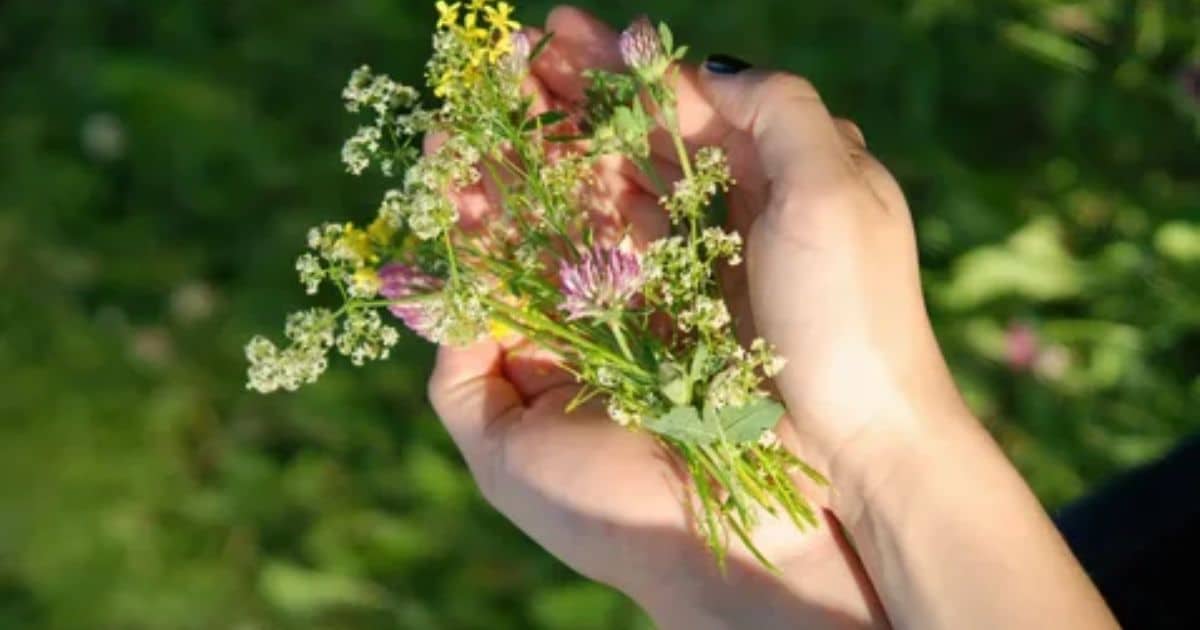
A little attentive care when starting and properly maintaining wildflowers ensures a successful flowering stand that returns for years of beauty.
Water for Wildflowers
Provide consistent moisture to expedite and synchronize germination after planting seeds. Water lightly daily keeping the top inch of soil damp until sprouts emerge. Gradually reduce watering frequency as plants become established. Mature wildflower plants are somewhat drought-tolerant but still benefit from weekly watering if rainfall is lacking.
Reseeding for Wildflowers
Many annual and biennial wildflowers drop copious seed that naturally reseeds next year’s flowers. Leave spent flowering stems intact through winter allowing seeds to fall to the ground and foster new generations. Rake back debris comes spring to expose soil so tiny seeds receive needed light. Perennials and non-seeding annuals will require replanting for sustained displays.
Pests and Diseases for Wildflowers
Wildflowers have relatively few pest and disease issues except for potential powdery mildew damage during wet periods. Promote airflow by avoiding overcrowding when planting. Organic neem oil applications at first sign of white fungal powder prevents establishment. Slugs and snails may chew young shoots; use organic bait traps to protect plants.
FAQ’s
How to plant wildflower seeds from seeds?
Prepare soil, choose a site with full sun, sow seeds in spring/fall, water lightly daily until sprouts emerge.
How to plant wildflower seeds indoors?
Start seeds indoors 6-8 weeks before last frost, provide light/warmth, gradually expose seedlings to outdoor conditions before transplanting outside after danger of frost passes.
How to grow wildflowers in pots?
Select a container with drainage holes, use a potting mix for seeds/cuttings, place in a sunny spot, water when soil partly dries out, fertilize monthly during the growing season.
Conclusion
Sowing wildflower seeds requires more initial effort than simply buying nursery flats but enables you to curate customized, ecologically-beneficial floral arrangements perfect for your growing conditions. Proper planting techniques matched with attentive care while plants establish ensures success turning barren beds into vibrant wild sanctuaries. Wildflowers thrive for years with minimal care beyond regular water and perhaps reseeding biennials and annuals for sustained flower power. The resilience of wildflowers pays dividends for decades potentially, bringing joy to you while sheltering precious pollinators. With the right wildflower species selection, soil preparations and sowing methods, these noble flowers easily decorate your landscape with majestic, carefree elegance.
